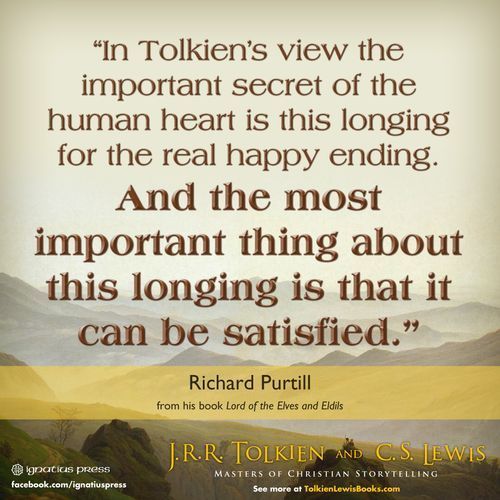Carl E. Olson's Blog, page 179
December 11, 2012
Not Your Mother: An Autopsy on "The Testament of Mary
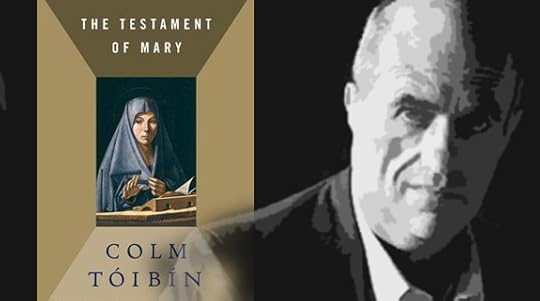
Not Your Mother: An Autopsy on The Testament of Mary | Mark P. Shea | Catholic World Report
Colm Tóibín’s book won’t tell you anything about Mary. It will tell you plenty about its very sad and very angry author.
With zombies all the rage (pardon the pun, 28 Days Later fans) there are all sorts
of helpful instructions out there for dealing with them. One illustration of
sundry methods for dispatching zombies pictures a man with a gun pointed at a
drooling old woman shuffling toward him. His hand covers his face as he weeps
in grief and hesitation. The caption reads, “Shoot, you fool! She’s not your
mother anymore!”
I think of this as I contemplate the latest piece of Catholic-hating
detritus to wash up on our shores from the Emerald Isle. The past 20 years have
not been good to Irish Catholicism. The Isle of Saints and Scholars, having
withstood Viking hordes and centuries of English oppression and sectarian
strife, could not withstand the most insidious attack the devil has sent
against the Irish: economic prosperity. Has corruption in the Church aided and
abetted the vicious turn against the Faith there? Sure. Abusive and corrupt
clerics bear very serious responsibility for the hostility to the Church in
large measure.
But let’s not kid ourselves. Sin—very serious sin—has always
been present in the Church, and Catholics who knew and understood their Faith
did not therefore abandon it. Still less did they try to solve the problem of
human corruption by telling lies about God, Jesus, and Mary. Time was when
Irish Catholics knew that God, Jesus, and Mary were their best friends in a mad
world.
That’s gone now. Ireland sold its soul for a brief period of
Celtic Tiger prosperity and got two things in return: a media class that is now
totally cloned from post-Christian England’s culture of casual anti-Catholic
blasphemy, followed by a bursting economic bubble that has left it with neither
man’s friendship nor God’s consolations. All it has left is spite, blasphemy—and
profound sadness.
Into the midst of this devolution of the Country That Used
to Be Ireland comes Colm Tóibín, the issues-filled author of (ahem) New Ways to Kill Your Mother, to deliver unto
us what NPR breathlessly
calls “A New ‘Testament’ Told From Mary’s Point of View”: his
novella The Testament of Mary.
It’s a book that fills a profound void—in the twice-annual need of God-haters
in corporate publishing to find some sort of media phenomenon that will insult
and blaspheme Christianity for Easter and Christmas.
Tóibín is the man of the hour, doing for Mary what Dan Brown
did for Jesus: turning her into a blank screen upon which the author can
project current cultural and personal obsessions for 30 pieces of silver. Tóibín,
it will shock no one to know, is an ex-Catholic homosexual who “once
contemplated the priesthood” (that clause is mandated in the standard corporate
biosketch of every embittered ex-Catholic screed writer), but jettisoned his
faith when he went to college and came out as gay.
In terms of content, the book is a by-the-numbers hatchet
job written in sensitive, spare, and poetic diction for the delectation of UK and
New York Chattering Classes and dipped in a bath of relentless, willful sadness
and bitterness.
Why Did Vatican II Ignore Communism?
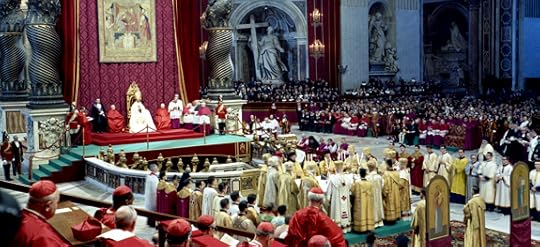
Why Did Vatican II Ignore Communism? | Edward Pentin | Catholic World Report
The veil of mystery over the Council’s omitting any reference to Communism has gradually been lifted.
As the Church celebrates the 50th anniversary of the opening of the
Second Vatican Council, there is one lesser-known—and some would argue highly disturbing—aspect
of the Council that has tended to be overlooked: the absence of any reference
to, or condemnation of, Communism in the Council’s documents, despite the fact
that the Soviet Union was at that time at the height of its powers.
Over the years, many have speculated over the causes of the omission,
while others have pondered the consequences, both for today’s Catholic Church
and the wider world.
In recent years, the veil of mystery over the omission has gradually
been lifted, as historians have uncovered irrefutable evidence explaining how
the absence of any reference to Communism in the documents came about.
The omission came as a surprise at the time, as until the Second
Vatican Council, the Church had repeatedly spoken out against Communism in its
teachings. Its condemnations were clear and unmistakeable, consistent with
those of Pope Pius XII, who was unfaltering in his denunciations of Communism
until his death in 1958.
In the vota of the Council Fathers—thousands
of recommendations gathered from key Church figures just prior to the Council
sessions—Communism figured high on the lists of concerns. Indeed for many, it
appeared to be the most important area singled out for condemnation.
Historians argue that a number of factors contributed to Communism not
being mentioned at all during the Council. The first was the unfortunate timing
of the Council. “It was the sixties and a new spirit of optimism hung over the
world,” explains Italian Church historian Roberto De Mattei, author of Il Concilio Vaticano II – Una storia mai scritta (Vatican II – An Untold Story). “It was during this period
that a ‘thawing’ of realities, already defined by the Magisterium as
antithetical, ensued.”
Continue reading at www.CatholicWorldReport.com.
December 9, 2012
New: "Knowing God: God and the Human Condition" by Frank Sheed
Now available from Ignatius Press: 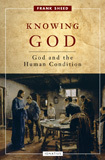
Knowing God: God and the Human Condition
by Frank Sheed
Atheists deny we can know God because they deny there is a God to know.
But even believers who affirm God's existence sometimes don't know him.
They don't know much about God because they neglect to think much about
God and what God has revealed about himself. They accept that there is a
God but they don't give much thought to what God is like. And even if
they know a great deal about God in the sense of being able to state
truths about him, they don't necessarily know him personally and
intimately.
In Knowing God (previously titled God and the Human Mind)
the great Catholic writer, teacher, and publisher Frank Sheed helps
readers to know that God exists, to think about who and what God is, and
to know God personally. He clears away popular misunderstandings of
God, often held by otherwise knowledgeable people. A masterful, lucid
writer, Sheed is not timid about tackling the most challenging questions
the human mind can pose about God, yet he does not reduce divine
mystery to dry propositions or neglect the necessity of faith.
Sheed acknowledges the limits of human words and human minds when it
comes to God. At the same time, he carefully explains the meaning of
Spirit, the role of theology and revelation, including the place of the
Bible in the Church, and the experience of God in mysticism. In the
final section, Sheed goes into the heart of the mystery of God,
exploring God as the Trinity and the difference the Trinity should make
in understanding God and ourselves.
Frank Sheed had a very distinguished career as a
publisher, lecturer, street-corner evangelist, and popular writer. He
and his wife Maisie Ward were the founders of the major publishing house
Sheed & Ward. His many popular books include To Know Christ Jesus, Theology and Sanity, Society and Sanity, and A Map of Life.
"This book is vintage Sheed: clear, commonsensical, and convincing. This is the Sheed of the two masterpieces of apologetics Theology and Sanity and Society and Sanity.
But this is also a new Sheed: older and wiser, more practical and
human--the post-Vatican II Sheed. I mean this in all the good senses,
the John Paul II senses: he is sensitive to the dangers of "the good old
days": verbalism, "dead orthodoxy," rationalism, deism, what Sheed
calls "theometry" instead of theology: an abstract, formal theological
geometry that only wants to define terms and win debating points.
Instead, this book is a kind of theological midrash, a deepening, a
spelunking in the caves of the deepest mysteries with the clear light of
honest words--honest with heart as well as head. It unites dogmatic
theology with lived religion. It is precisely the breath of fresh air
that Pope John XXIII opened the windows for, and in terms the layman can
clearly grasp.
- Peter Kreeft, Author, Because God is Real
Prior to Adult Faith Formation, One Thing Is Necessary
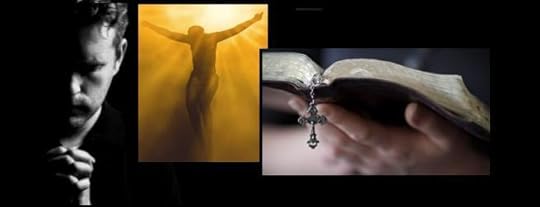
Prior to Adult Faith Formation, One Thing Is Necessary | R. Thomas Richard, PhD | Homiletic & Pastoral Review
I stress a simple but essential prerequisite (for adult formation), without which all the formal education in the faith will remain merely on the surface of the person.
In a recent article in HPR, I stressed the need in the Church for adult formation. 1
Of course, the leadership of the Church knows the need very well! But,
the inconvenient truth is that there is widespread neglect in following
through on the well-documented magisterial recognition of that need.
The many wonderful documents that teach the rightful priority of adult
formation don’t seem to make it down to the pews. That, however, was
the subject of the first article: we need adult formation in the faith!
In this article, I hope to stress a simple but essential prerequisite
to that needed formation. Without this one thing, all the formal
education in the faith will remain merely on the surface of the person.
Is that so bad? Yes, it is. God sees the heart, and wants to pour his
life and his love and his truth into human minds and hearts. God seeks
to gather human persons—mind, will, body—into blessed communion with
him.
Yes, God sees the heart. In this world, humans cannot see into the
heart of another, but they can often sense, or intuit, whether the
Christian witness of a Catholic is authentic or not. In this world,
humanity, who are still of this world, recognize a “salesman.” They
know intuitively about the “hired man;” they understand the duplicity
that is so common in the “City of Man.” If imitated in the Church, such
duplicity does not generate the radical transformation that Christ was
sent to effect by the cross. Worldly humanity can sense the presence,
or absence, of authentic, supernatural love—indeed, it is by such love
that “all men will know that you are my disciples” (Jn 13:35). Humans
in this world can hide, as Adam and Eve hid from God in their sin. They
can hide from the Gospel behind a cynicism begotten by duplicity! But
their hiding places are penetrated by the supernatural love that gives
without limit—that gives whatever is necessary—the love that imitates
God’s love.
There is “one thing” that is necessary (i.e., Lk 10:38-42).
Continue reading at www.HPRweb.com.
J.R.R. Thomas Chesterton of Hippo?
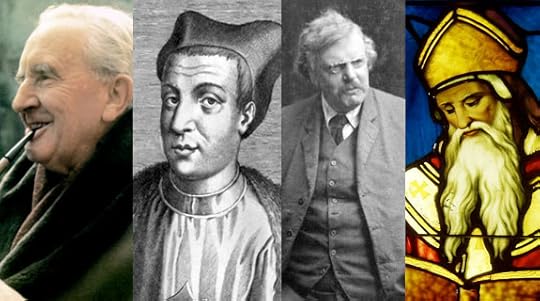
J.R.R. Thomas Chesterton of Hippo? | Francis J. Beckwith | Catholic World Report
Moody Publishers and its safely dead Catholic authors.
Several months ago
I was invited to contribute to a festschrift in honor of a dear friend
of mine, a well-known Christian philosopher who is a professor at a well-known
Evangelical university. I was, of course, eager to contribute to this volume,
to honor a man who I have known, as both friend and collaborator, for over a
quarter of a century. The editors, I am pleased to announce, were able to secure
a publisher, which is difficult to do, given the book’s genre. In fact, I was
present, on the evening of November 14 at a reception sponsored by the
Evangelical Philosophical Society, when a representative of Moody
Publishers revealed that his press had offered the editors a contract for this
tome. I was delighted to hear the news.
Several days later,
however, the editors informed me that the publisher had forced them to
disinvite me. Why? Because the members of Moody’s board, as the editors put it,
“are not ready as an institution to allow Catholic contributors for their
books,” even though in my prospective chapter—“The Reclamation of First
Philosophy”—I
had planned to do nothing distinctly Catholic. I had intended to defend the
honoree’s understanding of philosophy and its relation to other disciplines.
(To get a sense of what I mean by “first philosophy,” see my essay, “In Defense of First Philosophy,” published last June at The Catholic Thing.)
Although I was
disappointed by the dis-invitation, I was not offended. Nor did I think that I had
lost something to which I was entitled. For reacting in such ways would have
been inconsistent with what I believe about theological integrity and the
obligation that I have to respect the confessions of my fellow Christians, even
when I think they are mistaken.
Nevertheless, out
of curiosity, I went to Moody’s website to find out what sorts of books it is
publishing. I was surprised at what I found.
December 8, 2012
Living Between the First and Final Coming of Christ
A Scriptural Reflection on the Readings for Sunday, December 9, 2012, Second Sunday of Advent | Carl E. Olson
Readings:
• Bar 5:1-9
• Ps 126:1-2, 2-3, 4-5, 6
• Phil 1:4-6, 8-11
• Lk 3:1-6
"There are three distinct comings of the Lord of which I know," wrote St. Bernard of Clairvaux, the great twelfth-century doctor of the Church, in one of his Advent sermons, "his coming to people, his coming into people, and his coming against people."
He
added that Christ's "coming to people and his coming against
people are too well known to need elucidation." Since, however,
today's Gospel reading mentions both groups—those Christ comes to
and those he comes against—a bit of elucidation is in order.
St.
Luke took pains to situate the fact of the Incarnation within human
history. He did so by providing the names of several different
rulers, beginning with Caesar Augustus (Lk. 2:1), who reigned from 27
B.C. to A.D. 14, and who was ruler of the Roman Empire when Jesus was
born. In today's Gospel, the Evangelist situates John the Baptist's
bold announcement of Christ's coming in the fifteenth year of
Tiberius Caesar. Tiberius, the stepson of Augustus, reigned from A.D.
14 to 37. Pontius Pilate was appointed procurator of Judea by
Tiberius in 26, and served in that post for ten years. Those men and
the others mentioned by St. Luke—Herod, Philip, Lysanias, and the
high priests Annas and Caiaphas—ruled the known world while the
ruler of all creation walked the dusty roads of Palestine and
announced the kingdom of God was at hand.
The Roman rulers
were ruthless and often violent men who established rule and kept
order through military might and political power. They did, in fact,
establish and keep a sort of peace—the pax
Romana—which
lasted about two centuries (27 B.C. - c. A.D. 180). Yet that peace
was both uneasy and fragile; it had been won by the sword and often
relied on fear, intimidation, and persecution. St. Luke's mention of
these rulers was, on one hand, meant to support the historical nature
of his "orderly account," which was to be "a narrative
of the things which have been accomplished among us..." (see Lk.
1:1-4).
But it was also meant to establish a deliberate
comparison and contrast between the rulers of this world and the
ruler of nations, between the kings of earthly realms and the King of
kings. The Roman rulers used force and relied upon fear, but the
Incarnate Word came with humility and love. Emperors were announced
and escorted by armed soldiers, but the birth of the Christ child was
announced by heavenly hosts offering songs of praise, not swords or
spears. "What the angel proposes the shepherds is another kyrios [Lord]," notes Fr. Robert Barron in The
Priority of Christ (Brazos, 2007), "the Messiah Jesus, whose rule will constitute a
true justice because it is conditioned not by fear but by love and
forgiveness..."
The Lord came against injustice, fear,
violence, and death, and would himself experience each of those
dreadful realities for the sake of all men. Such would be "the
salvation of God" spoken of John the Baptist, who quoted from
Isaiah's beautiful and moving hymn-like reflection on the glory and
goodness of God (Isa. 40). John, like Isaiah, was pointing toward the
comfort, peace, and joy that only God can give.
Yet the final
rest and joy is not yet fully known. We live, St. Bernard explained,
during the time of the "third coming" of Christ, between
the Incarnation and the final coming, or advent, when all men will
finally see the pierced but glorious Lord. "The intermediate
coming is a hidden one; in it only the elect see the Lord within
their own selves, and they are saved." Christ comes to us in
spirit and in power; he most especially comes to us under the
appearance of bread and wine.
"Because this coming lies
between the other two," wrote St. Bernard, "it is like a
road on which we travel from the first coming to the last." That
winding road is the way of the Lord, the path of Advent.
(This "Opening the Word" column originally appeared in the December 6, 2009, edition of Our Sunday Visitor newspaper.)
December 7, 2012
Turning the Corner
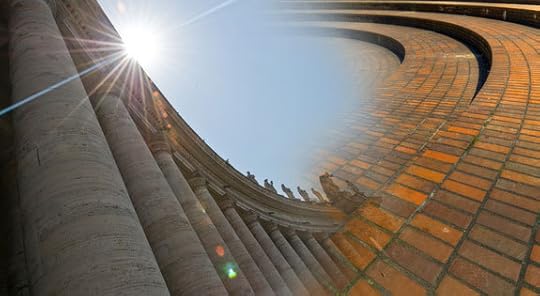
Turning the Corner | James Kalb | Catholic World Report
Catholics should not hesitate to bring Catholic beliefs and arguments into the public square.
In the last several months I’ve been discussing the problems Catholics face dealing with public life today. The recent election underlined some of them. The bishops and others made their pitch about threats to the family and the freedom of the Church, the Democrats stood firm, and most Americans—including most self-identified Catholics—voted for the Democrats. Not only does the world care very little for Catholic concerns, but it seems that Catholics acting as citizens care little for them as well.
So what should the faithful do? If the world’s against us, so it’s becoming harder and harder to act or even think as Catholics, should we retreat to monasteries? Return to the catacombs? Overthrow the government and establish a dictatorship run by a revolutionary vanguard? Such proposals have serious drawbacks, and something much more moderate would be more to the point. All we really need to participate with integrity in public life as citizens and Catholics is a society in which what is good—and not freedom, equality, or prosperity—is the highest standard. If we had that, discussions about goals that rise above who gets what would become possible, and Catholic concerns could become mainstream.
It seems that those concerns would do well in such a setting. Our social doctrine is consistent with natural law, which means that on the whole it follows a common-sense understanding of what things are, what’s good for them, and how they work best. So we should be able to get a lot of mileage out of talking about what’s good in human life as we find it, and how that can be respected and promoted. All that’s necessary is that people accept the good life and common sense as standards.
The problem is that appeals to those standards don’t work very well today. Modern public discussion doesn’t like common sense, even educated common sense. If something can’t be observed, measured, and dealt with by neutral professional standards, people think it’s rational to ignore it and do what they otherwise want to do. After all, they believe, if something can’t be nailed down and proved it’s a prejudice, a stereotype, or an attempt to spin the discussion, so it doesn’t deserve serious attention.
That skeptical approach to informal knowledge can be productive in the natural sciences, but it doesn’t work when applied to life in general. Basic human decisions require insight and judgment, and neither can be made exact or turned into academic expertise. If we limit ourselves to what can be made rigorous our decisions must either ignore reason altogether or base themselves on arbitrary default assumptions like equality. In either case, the results will defy common sense. For examples, look at what educators, architects, and legal thinkers have done to schools, cities, and the law. What now passes as expertise has led to results that are often completely at odds with normal ways of thinking, learning, and living.
Such an approach to knowledge and reason has nonetheless become established, and the result is that ideas of ultimate goals and natural patterns have more and more been driven out of public discussion.
December 6, 2012
Ignatius Press launches www.TolkienLewisBooks.com
“In Tolkien’s view the important secret of the human heart is this longing for the real happy ending. And the most important thing about this longing is that it can be satisfied.”
— Richard Purtill, from his book Lord of the Elves and Eldils: Fantasy and Philosophy in J.R.R. Tolkien and C.S. Lewis
Millions of people the world over have read J.R.R. Tolkien’s books The Hobbit and The Lord of the Rings, and millions more have read C.S. Lewis’s The Chronicles of Narnia. And perhaps just as many have seen the films based on these works. But not too many realize the deep Christian underpinnings of the works of both men.
Ignatius Press has launched a new website, J.R.R. Tolkien and C.S. Lewis: Masters of Christian Storytelling (www.TolkienLewisBooks.com) which delves into the profound religious background of Tolkien and Lewis. Featuring books by best-selling authors such as Peter Kreeft, Joseph Pearce, Richard Purtill and others, video links featuring presentations by many of the same authors, and a plethora of articles on Lewis, Tolkien, and the Inklings, this site offers a goldmine of information for anyone wanting a closer look at the mythic worlds of Middle Earth and Narnia.
Some sample links:
Books exploring the life and writings of J.R.R. Tolkien.
http://www.ignatius.com/promotions/tolkien-and-lewis/tolkienbooks.html
Contemporary Christian fiction in the footsteps of Tolkien and Lewis.
http://www.ignatius.com/promotions/tolkien-and-lewis/novels.html
Articles on Tolkien and Lewis.
http://www.ignatius.com/promotions/tolkien-and-lewis/articles.html
A one-hour video of a talk by Catholic novelist Michael D. O’Brien on “Catholic Fiction and Restoring Culture”.
http://www.ignatius.com/promotions/tolkien-and-lewis/obrien.html
Ignatius Press author Joseph Pearce on EWTN Live discussing Tolkien, The Hobbit, and The Lord of the Rings.
http://www.ignatius.com/promotions/tolkien-and-lewis/pearce.html
New: "Enchiridion Symbolorum" (a new edition of "Denzinger")
Now available from Ignatius Press:
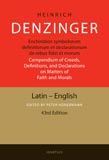
Enchiridion Symbolorum: A Compendium of Creeds, Definitions and Declarations of the Catholic Church
1437 pages | Hardcover
Edited by Peter Hunermann, Ph.D
New, Updated Edition-Latin and English
This compendium of theological-historical source texts, in a bilingual
edition, is completely revised and extended to the pontificate of
Benedict XVI. With its unique wealth of official church documents and
sources, it is an essential resource for theological work.
Since its first edition in 1854, "Denzinger" has become a standard work
and an indispensable tool for serious theological work. It faithfully
reflects the history of the Church's faith and its development over the
centuries. Indeed, its reference system has become an established part
of citing important theological sources.
Peter Hünermann has updated the texts of this compendium and he has
provided each text with an introduction. The original language and the
English translation are presented in two columns so readers can refer to
the original text, while deepening their understanding through the
introductions, notes, and reliable English translation.
The final section of the volume features indexes, including a detailed
systematic index to aid locating texts on specific themes. The revised,
expanded edition of "Denzinger", with its text-critical editing, is a
necessary part of any up-to-date theological library.
Peter Hünermann, Ph.D. did his studies in philosophy
and theology in Rome, Munich, and Freiburg, and then was Professor of
Dogmatics in Münster and Tübingen. He is the Co-founder and former
President of the European Society for Catholic Theology.
You Better Watch Out—St. Nicholas is Coming to Town
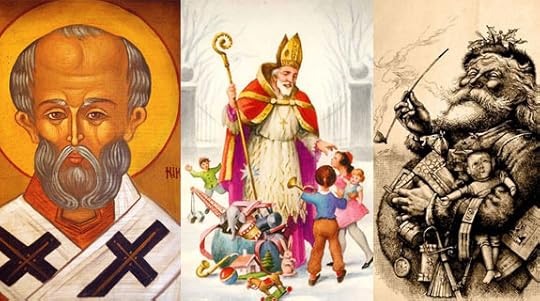
You Better Watch Out—St. Nicholas is Coming to Town | Christopher B. Warner | Catholic World Report
The seldom-told stories of St. Nicholas the Wonderworker.
Everyone loves jolly ol’ Saint Nicholas. There is
something romantic and cozy about telling Santa stories around the crackling fire.
He is an icon of the Christmas season. But not everyone agrees about the real
Santa Claus. Some like to picture Santa
as the early-19th century, pipe-smoking elf with a bucket full of coal for
naughty boys who don’t eat their cauliflower. Others prefer Santa as an
emasculated, overweight consumer who gets bossed around by Mrs. Claus and thus
flees the North Pole once a year to relive the glory days. Then there is the
wiry bishop who pulled Arius’ beard and punched him in the face for teaching
heresy. Maybe they’re all the same guy. A 1,700-year-old hero can’t be expected
to fit into just one old Santa suit. Our images of St. Nicholas seem to evolve
or deteriorate based on the values of contemporary culture in different times
and places.
In 1809, Washington Irving wrote Knickerbocker’s History of New York, a
work of imaginative fiction that included several tales about a jolly, elfin
Dutchman scampering down chimneys to bring gifts to children. The American image
of Santa Claus was solidified during this time period. “A Visit from St.
Nicholas,” a poem by Clement Clarke Moore published in 1823 and better known as
“’Twas the Night Before Christmas,” introduced the enduring image of Santa’s
reindeer and sleigh and fixed the date of his visit to Christmas Eve. These are
fun stories that make up an important part of our literary tradition and
culture in America. However, stuffing chimney-hung stockings is an ancient
tradition that pre-dates the American elf lore as well as the Dutch, who fill
their children’s wooden clogs with gifts the night before St. Nicholas Day
(December 6). Chucking gold into people’s wet socks is a custom started by a
young man named Nicholas who lived in Asia Minor around 300 AD.
There are hundreds of stories about St. Nicholas of
Myra. He was born in Lycia on the southwest coast of modern Turkey. His wealthy,
pious parents, Theophanes and Nonna, read to him the Holy Scriptures and faithfully
taught him his prayers, but apparently died while he was still young. His
uncle, Bishop Nicholas of Patara, ordained young Nicholas and made him his personal
assistant. The zealous youth proved himself an inspiring catechist in the
Christian community and an obedient servant to his uncle. During these dutiful
years he showed great kind-heartedness and generosity by distributing his
inheritance to the poor.
During this time, the three grown daughters of a formerly rich
inhabitant were in danger of being sold into slavery because of their
father’s
pennilessness. Hearing of this, young Nicholas secretly visited the
man’s house
at night and threw gold in at the window to provide a dowry for one of
the
girls. The eldest daughter was soon married, and Nicholas again made
clandestine donations for the other two daughters, with equally
felicitous
results. Modern children who awake to an orange or to gold-foiled
chocolates in
their stockings reenact this story because, by all accounts, one of
Nicholas’ gifts
landed in a sock that was hanging by the fire to dry.
The young Nicholas was blessed with a pilgrimage to
the Holy Land. During the voyage, a storm came up that terribly frightened the
crew but, through the prayers of the saint, the waves of the sea were becalmed
and the passengers saved. According to Palestinian Christians, Mar Nkoula (St. Nicholas) lived in a
cave as a hermit for three years after visiting the holy places. In a vision
Nicholas was told to return to Lycia. Years later an Orthodox Church was built
over the hermit’s abandoned cave at Beit Jala, and Palestinians still
commemorate this saint by giving gifts to children on December 19.
Not long after his return to Asia Minor, Nicholas
was made archbishop of Myra.
Carl E. Olson's Blog
- Carl E. Olson's profile
- 20 followers


